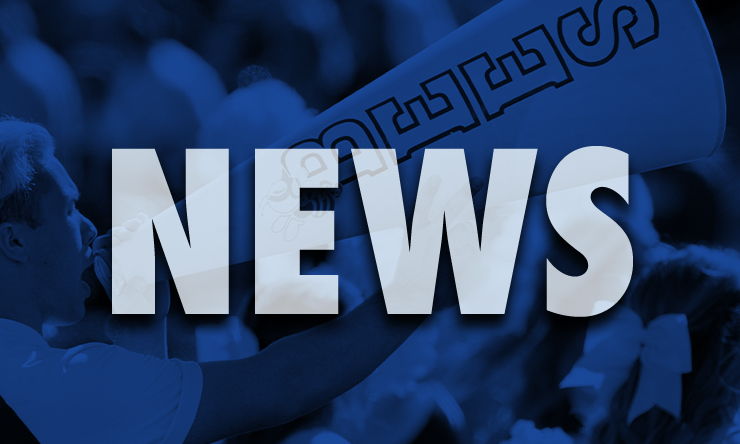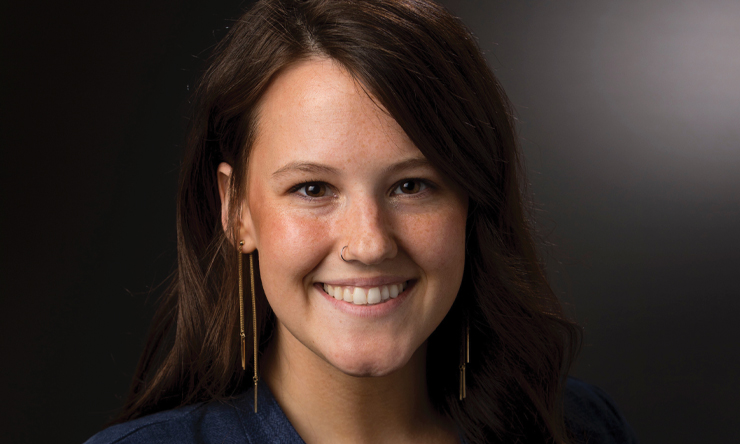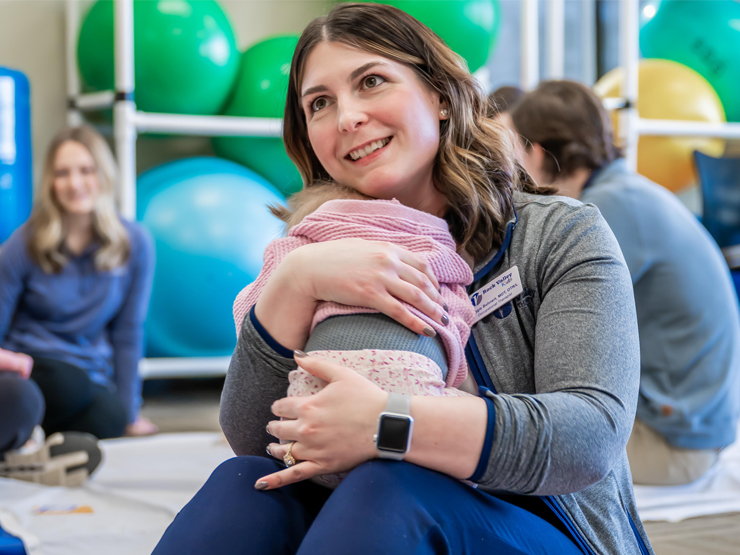The diversity of 77 million baby boomers and their expected extended life span are creating new challenges for all of our country's systems. None is being strained more than health care, where an uninsured population of 45 million is already pushing the limits of what governmental benefit programs can accommodate. A national crisis? Undoubtedly-especially when America already spends more on health care than most other advanced countries.
Yet, even as America's health care crisis continues to draw conflicting opinions on how to best solve it, health care providers and educators have turned their focus to developing strategies to better provide effective, efficient and quality care to an increasingly diverse, complex patient base. As you'll learn from our three experts, such challenges require vigilance, dedication and adaptability, both in keeping pace with and charting the course of health care trends.
Exploring the Next Medical Moral Breakthrough
By James Lindemann Nelson, PhD
bioethicist and professor, Michigan State University
2005 Woodrow Wilson Visiting Fellow, St. Ambrose University
One of the biggest challenges our country faces today is how to ensure fair access to sustainable, high-quality health care. We now spend more of our federal budget on health care than on education and defense combined, and health care spending increases at or near a double-digit percentage rate every year.
So why are 45 million Americans uninsured?
Part of the reason is that we in this country are more inclined to support innovation in drugs and other therapies designed to provide new ways to defeat or control disease than to provide the benefits of established therapies to all who need them. Much research focuses on the needs of relatively few Americans, rather than giving top priority to addressing public health issues, such as reducing overall disease burdens that could help vastly more people.
We simply can't continue on our present path. Even those who currently have health insurance-excluding, perhaps, the wealthy-will see their benefits wither or simply vanish. We will come to a crisis where it will be evident that we can't accomplish other important social goals-funding education, social security, or defense-because healthcare is devouring all the dollars.
And we're going to have to do something, soon, because the drivers of rising healthcare costs-continued technological innovation and an aging population-are only making the problem worse.
What we must first do is make access to health care a right of citizenship. We must establish a minimum level of health care, just as we mandate minimum levels of education for each citizen.
Secondly, we need systematic planning in health care, with an efficient single-payer system, as Canada has, for example. The savings in pass-through costs would be enormous-between 10-20 percent of the entire health care budget, amounting to hundreds of billions of dollars.
Thirdly, we must improve therapies in a way that mainly reflects our most serious, most widespread needs. We may someday be able to engineer medications that enhance human performance-making us more intelligent, able to endure more physically, or need less sleep-but should we, without first making sure that decent basic care is available to everyone? Should we continue to pursue pushing back the average age of death from 72-85 years to 100 years or more, rather than making it more likely that everyone gets to their 70s in the first place? Apart from the costs, the prospect of unending medical advances may make it harder to accept the fact that we're all mortal and have to come to terms with our death.
These issues are most challenging because the ground is shifting beneath us. Yet if we begin now to develop more of a social consciousness, where the benefits generated from social capital work to everyone's benefit, it might act to steady us. To solve the health care crisis, we must reorient our priorities toward achieving the general good for all of us and generations to come. Ultimately, real progress won't be measured by the next medical breakthrough, but by breakthroughs in our moral imaginations that help us better understand and ease the human condition.
-as told to Jodi O'Donnell
Meeting the Needs of the New Average Joe
By Sandra Cassady, PhD
Professor and director, St. Ambrose Doctor of Physical Therapy Program
Joe's knee replacement had gone exactly as planned. For his surgery team, it had been one of several such operations that day alone, and they were ready to head down the stairs to lunch. Joe, on the other hand, will have to learn how to negotiate stairs again-as well as how to walk, sit, stand and even dress himself-once he's regained motion in his new knee.
This scenario is a daily reality throughout the United States. Living longer, we simply wear out such body parts as knees and hips. We also accumulate multiple diagnoses. Yet medically-complex patients survive today in growing numbers, from premature babies to persons with once-terminal disabilities.
Along with producing obvious implications for health care manpower-not only in the sheer numbers needed but also in the level and kind of education they receive-our longevity and increased levels of illness also have a profound impact on health care costs. In the ten-year period between 1992 and 2002, health care spending rose from $827 billion dollars to $1.6 trillion dollars, and is projected to nearly double by 2012.
Health sciences education must address these challenges head on, and St. Ambrose is doing so on several fronts.
First, we prepare our students to meet the comprehensive needs of patients across all systems and throughout the life span. Today's medically-complex patient will likely require the services of several different disciplines, from nursing and speech therapy, to occupational and physical therapy. Understanding the roles played by other health care professionals and educated to work collaboratively, SAU health sciences graduates are prepared to take their place on contemporary health care teams.
Second, we prepare students to manage health care resources most efficiently and effectively. Collaboration among well-educated health care teams is the standard approach in hospitals and clinics today. Take Joe's situation. Admitted in the early morning, he would first be cared for by his surgical team, then by the recovery nurse. As soon as he was stable and in his room, a PT would get him up for strengthening and range of motion work. An OT would come by the next morning to help him learn techniques to accomplish the activities of daily living, such as getting dressed. For the three to five days of his hospital stay, his floor nurses and doctor would be collaborating with the therapy staff to be sure Joe was getting what he needed.
Third, a vast amount of information is now available at the click of a mouse. At St. Ambrose, we are teaching students how to access, evaluate and use research as part of their decision-making processes. We are helping them learn to choose medical interventions that are research-based, in an efficient and effective manner.
Evolving patient needs fuel the majority of changes in health care delivery today. Yet educational institutions such as St. Ambrose must be prepared to provide state-of-the-art health sciences education that emphasizes the critical thinking and collaboration that will be required by the future.
-as told to Susan Flansburg
Not a New Health Care Landscape, But New Solutions
By Carole Reid RN, MSN
Vice President for Patient Services, Genesis Medical Center
Those of us in the health care delivery system are being challenged by a multiplicity of issues that affect our ability to provide quality, comprehensive patient care, both now and in the future.
We are in the midst of a health care crisis that is only going to become more acute, and that is the aging of our population. In greater numbers, we baby boomers are graduating into the ranks of the elderly, where we're living much longer than our parents did. The result is that, when we do require care in a hospital setting, we're more often there with co-morbid conditions, such as heart disease with diabetes, for example.
Such medically-complex patients require a corresponding complexity of care. Patients are treated by a spectrum of practitioners in many specialties, using increasingly sophisticated technology. As a result, many health care professions are evaluating how their practitioners can meet the needs of both today's and the future's health care delivery systems. The standard educational preparation in many of these professions is necessarily becoming more comprehensive, with an emphasis on systems thinking within a delivery model, where practitioners work collaboratively in multidisciplinary teams.
This was the approach taken when Genesis and St. Ambrose began working together on a center for health sciences education. We wanted to create an education model that encourages the interdisciplinary interaction that's not traditionally in place in the higher education setting. This type of "cross-pollination" between the nursing, occupational therapy and physical therapy programs will be critical to the health care delivery model of the future.
Another major emphasis will be on evidence-based practice-the use of research and knowledge in delivering care to patients. For example, I recently was observing a nurse caring for an infant exhibiting respiratory distress in the neonatal intensive care unit at Genesis Medical Center. The neonatal nurse had already been online accessing research on how a woman's use of anti-depressants during her pregnancy might affect her newborn. This is access-based knowledge, where health care practitioners depend less on "knowing" a specific body of knowledge and more on "knowing how to access" the evolving knowledge base. Developing these critical thinking skills in health sciences students moves them from being technical to being conceptual in the way they deliver health care.
These collaborations between health care providers and health sciences educators are key to the future of health care in this country. Together, we must define the work of the future, the roles needed to do that work, and the education that's essential to perform each role. But we cannot wait until we have all the pieces or know all the answers. We must act now.
-as told to Jodi O'Donnell
News
Share This Story



